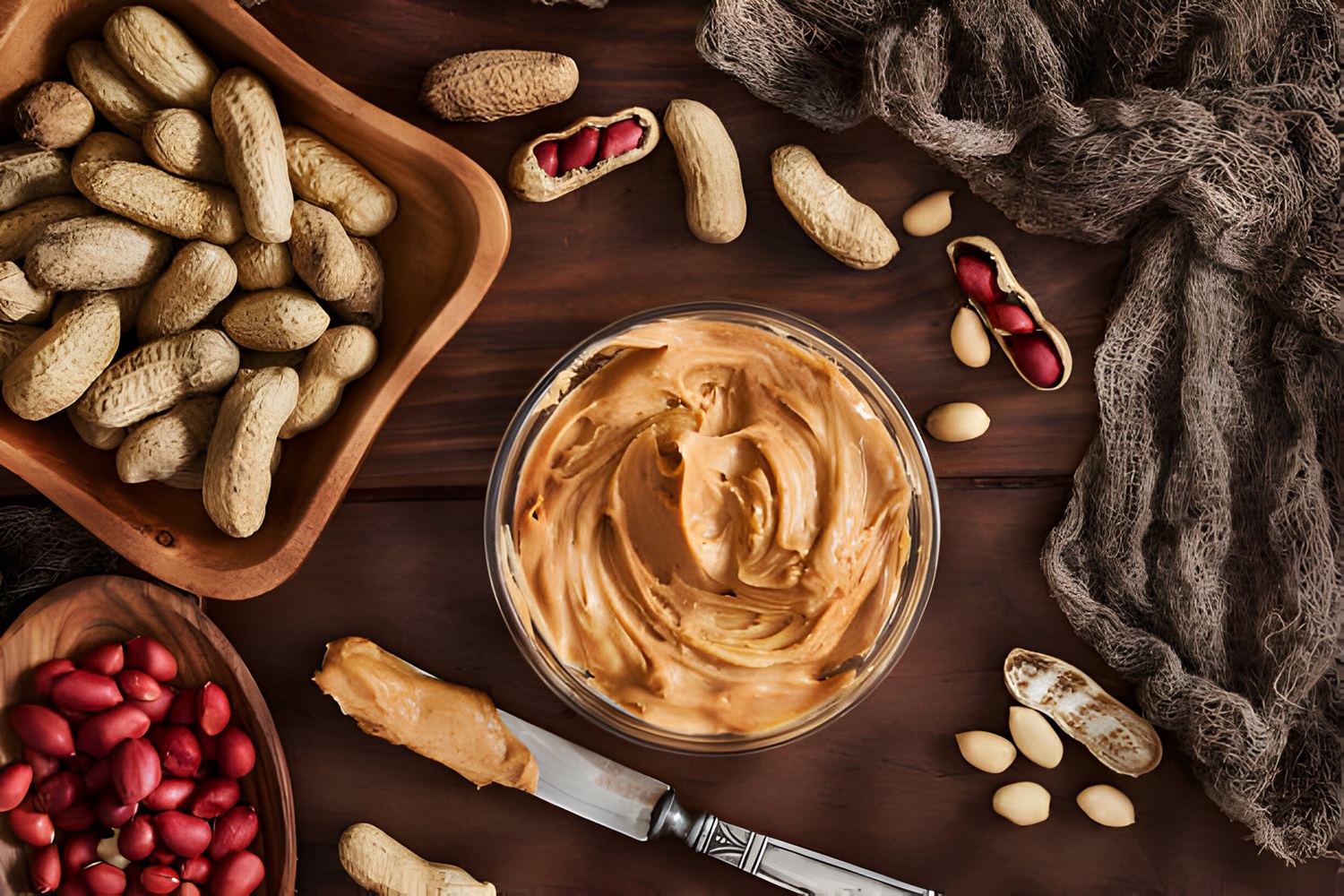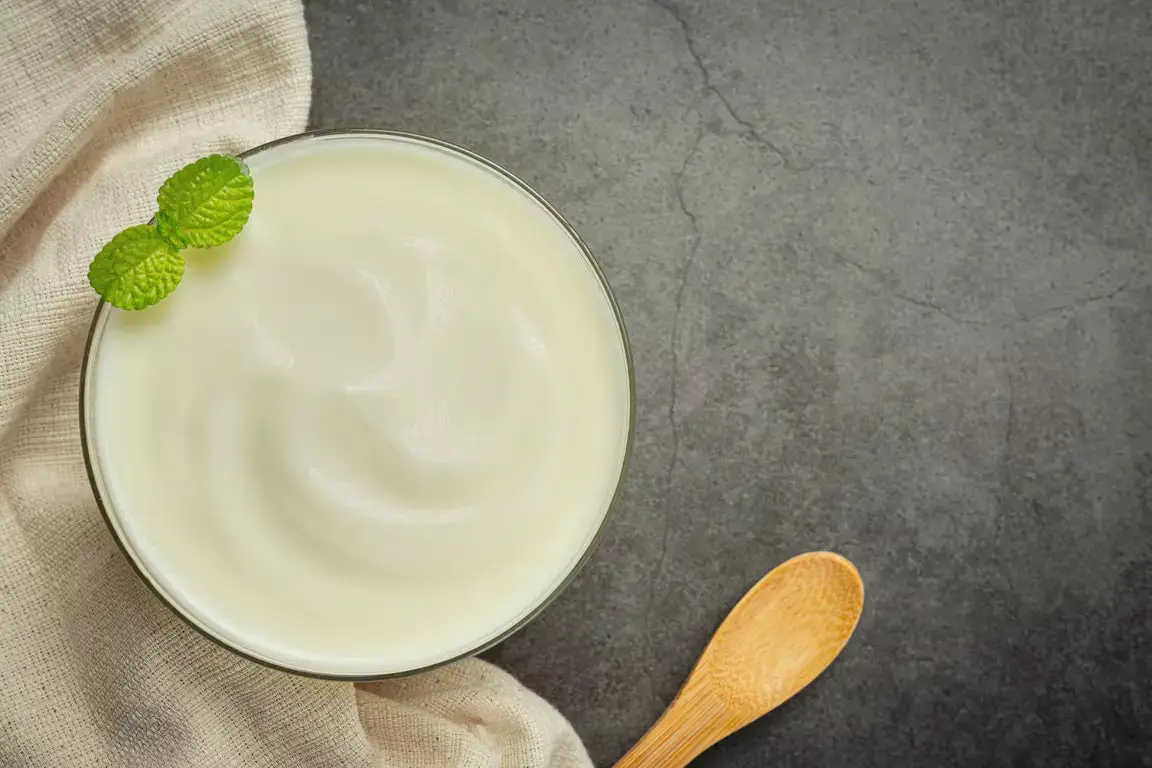Peanut Butter’s Role In Weight Gain
A Nutritive Journey Through Time And Taste
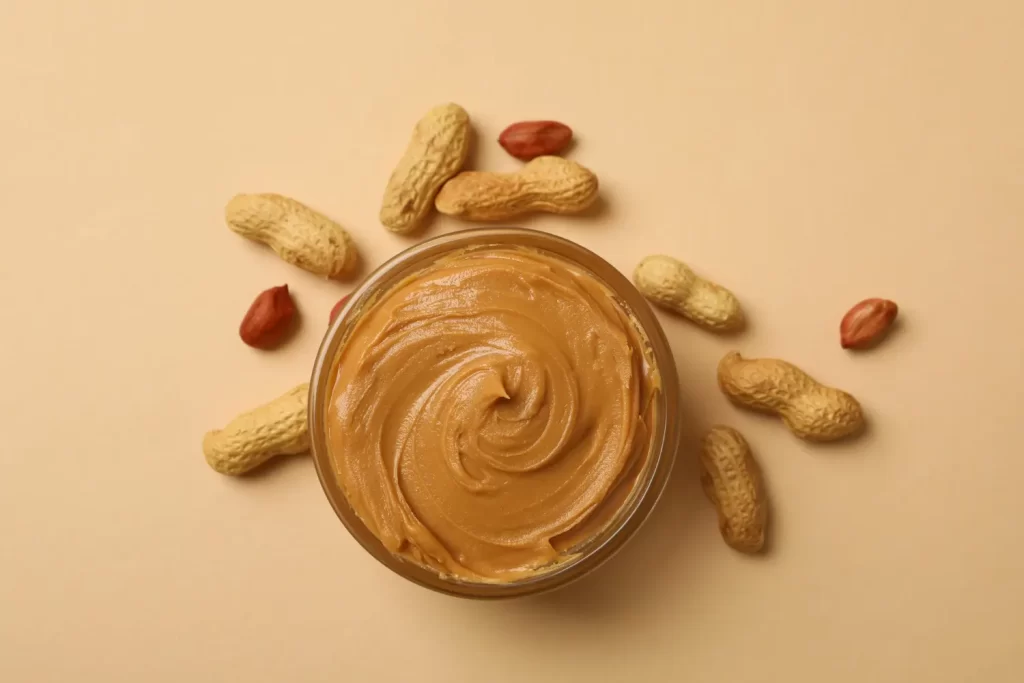
The Popularity Of Peanut Butter In India
Peanut Butter, an honest mix of finely ground peanuts and other ingredients like oil, butter, and other flavours, has journeyed from its origins in the United States to our modern kitchens through trading and globalisation, emerging as a beloved and versatile ingredient. Its rise to fame is rooted in its delicious taste and nutritional value. Indians loved the peanut butter and jelly sandwiches when they were shown to the common public outside the culinary world of India. We loved the creamy texture and the rich taste of peanut butter, be it in the sandwiches or salads or as a dip. Recently, with the rise of the fitness culture in India, peanut butter has become popular among health enthusiasts as an excellent way to get their protein quotas. In this blog, we will be answering all the questions related to peanut butter and its role in weight gain.
The Concern: Will Peanut Butter Cause Weight Gain?
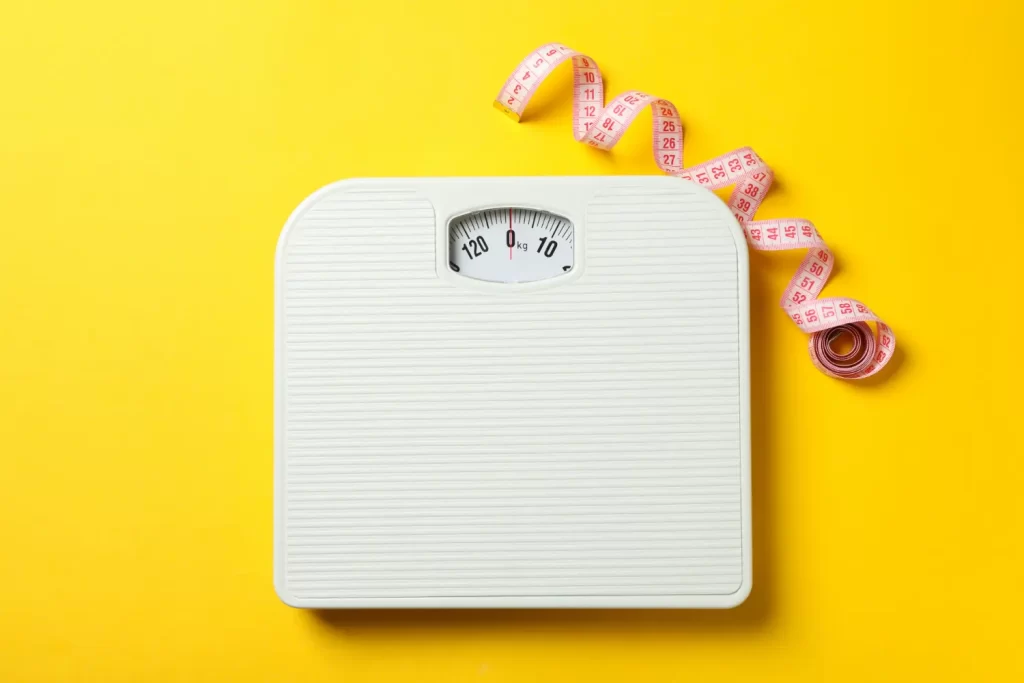
Peanut Butter, with its rich profile, does carry caloric weight. Its abundance of proteins and mono-unsaturated fats can overfill, potentially aiding weight gain. The essence lies in mindful consumption. Portion awareness and a conscious combination ensure that peanut butter can be a pleasant partner in the search for a balanced diet. Amidst the nutritional speech, one truth stands: peanut butter and weight gain engage in an intricate balance, where knowledge dictates each move, leading to a sense of well-being.
Purpose Of The Blog: Separating Fact From Fiction

In the context of peanut butter and weight gain, this blog would likely explore common misconceptions, such as whether peanut butter is a direct cause of weight gain or if it can be a nutritious portion of a balanced diet. The blog’s purpose is not to promote or discourage peanut butter consumption but to offer readers a reliable resource to navigate the complex landscape of nutrition and weight control.
How Peanut Butter Is Made?
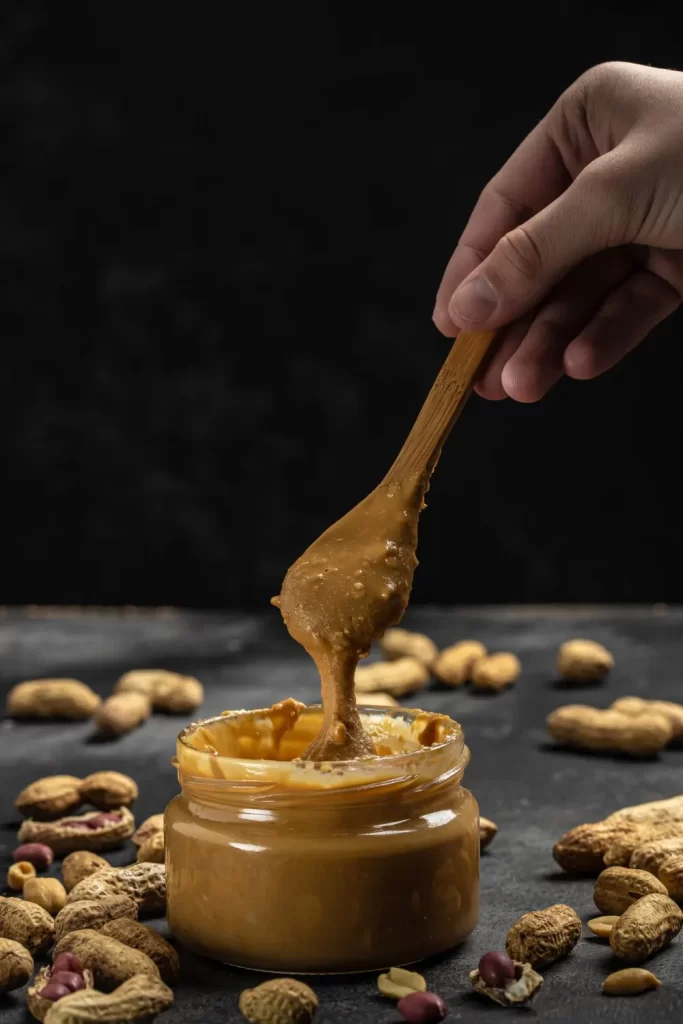
Peanut butter is nothing more than a mix of grounded peanuts and salt. Flavours are added to make the taste unique for the brand. The texture is like butter, hence the name ‘Peanut Butter.’ However, the benefits are complex, so let’s take a look.
What Does Peanut Butter Contain?
Peanut butter’s nutritional profile is a balanced fusion of macronutrients and micronutrients. It offers approximately 8-10 grams of plant based protein and 16-18 grams of heart healthy fats per 2 tablespoon servings. Around 6-8 grams of carbohydrates, including dietary fibre, will make you feel full.
Micronutrients like vitamin E, niacin, magnesium, phosphorus, and folate contribute to skin, immune, and bone health. That’s the reason it is so loved by the fitness community, for its multifold benefits.
A good peanut butter is moderately caloric, providing approximately 90-100 calories per tablespoon. This energy content originates primarily from its composition of healthy fats and protein. If not checked while consuming, this caloric value does lead to weight gain.
How Many Types Of Peanut Butter Are There?

While peanut butter can be paired with a number of ingredients to make a new kind, it comes mainly in three varieties:
Natural: This type is prepared with minimal ingredients, often solely peanuts and a pinch of salt.
Reduced Fat: Includes fewer fats and calories but may have added sugars or additives to maintain flavour and texture.
Regular: The classic version, blending peanuts, salt and oil for a balanced taste and nutritional profile.
Role Of Protein And Healthy Fats In Weight Management
In this complex field of weight management, the interplay between protein and healthy fats is crucial. Protein supports lean muscle, fueling metabolism’s flames. Meanwhile, healthy fats elegantly fulfil, curb cravings and stimulate delight. This duo, displayed by the rich appeal of healthy protein peanut butter, offers a harmonious blend.
Debunking Peanut Butter Myths
In the sea of peanut butter Myths, we confront the fear of fats and their alleged connection to weight gain. Venturing on this journey, we’ll unravel the web of truths that free peanut butter from unnecessary worries. We challenge the misconception that all fats are damaging, exploring the intricate world of healthy fats within peanut butter. This journey offers a wide view of their contribution to nutritional well-being. Monounsaturated fats stand as protectors, guarding against harmful cholesterol surges, while polyunsaturated fats’ movements moderate inflammation. As we navigate this myth busting path, the knowledge unfolds, clearing misconceptions and breeding a deeper, more informed comprehension of the symbiotic bond between peanut butter with high protein and health.
Benefits Of Peanut Butter
As you savour each spoonful of healthy peanut butter, remember that you’re indulging in a number of benefits. From fueling your muscles to nurturing your heart and appeasing cravings, peanut butter shines as a culinary jewel, improving your journey towards a healthier, more vibrant you. Some of the key benefits of peanut butter are mentioned below:
Protein Powerhouse: At the heart of a good peanut butter magic lies its impressive protein content. With each spoonful, you’re granting your body a nutrient rich gift, promoting muscle maintenance and growth.
Fats of Wisdom: Don’t be misled by the term “butter.” The fats found in peanut butter are far from harmful. Loaded with healthy fats, protein rich peanut butter takes leaps in supporting cardiovascular health.
Nutrient Abundance: Peanut butter is an expert in the domain of nutrient density. With its creamy texture, you’ll discover a treasure of vitamins, minerals, and antioxidants.
Taming the Cravings: The call of cravings finds a gentle winner in peanut butter. Its satisfying blend of protein and fats plays a pivotal role in managing cravings, granting you rest from the stormy sea of hunger.
Can Peanut Butter Make You fat?

The calorie equation: Calories in vs calories out
In the Peanut Butter and Weight Gain study, the calorie equation takes centre stage, considering calories in vs calories out. This fundamental philosophy highlights the dynamic balance of energy intake and expenditure, shaping the body’s response to its consumption.
The role of portion control
Accuracy in portion control takes main significance. Delving into measuring and understanding serving sizes, we discover the importance of mindful consumption. A spotlight on calories and servings in popular peanut butter options sheds light on the caloric landscape, enabling informed dietary choices. Peanut butter’s strength extends beyond calories. Its satiety factor emerges as a critical point, giving us a feeling of fullness that may stop the desire for excessive intake. Unravelling the glycemic index and blood sugar impact shows how peanut butter’s nutrient composition influences the body’s blood sugar response, a key consideration in weight management.
How To Incorporate Peanut Butter Into A Balanced Diet?
Pairing peanut butter with complementary foods
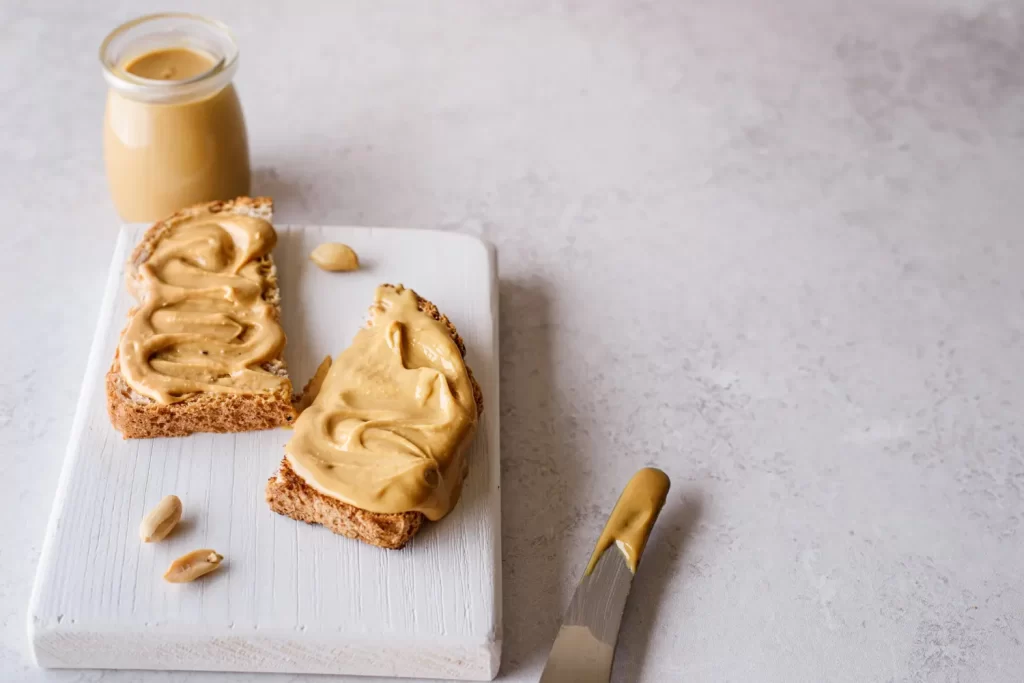
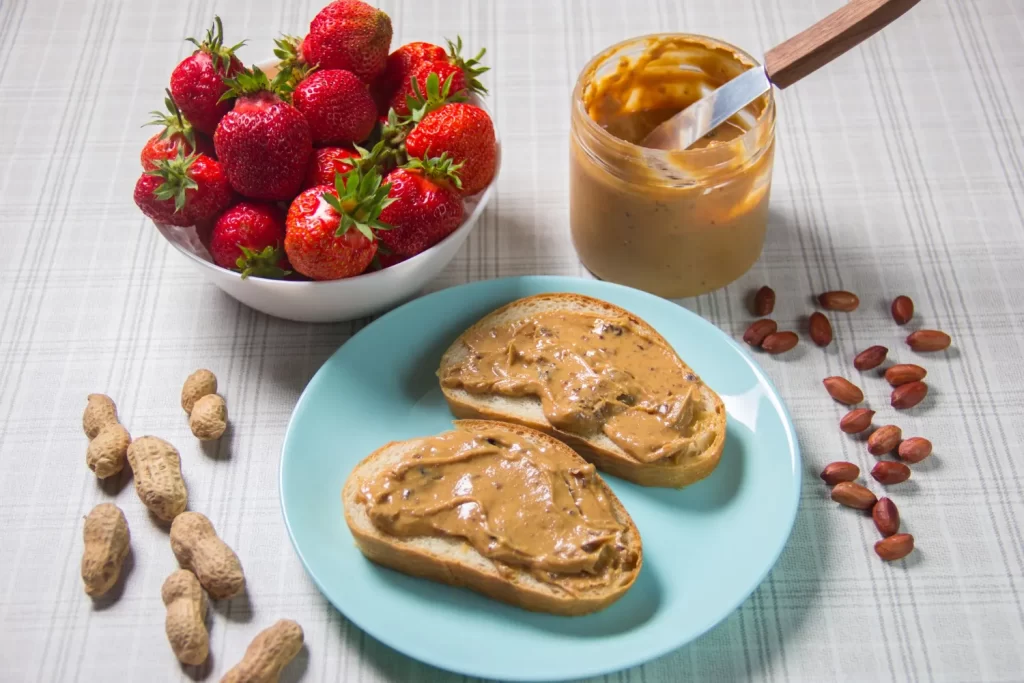
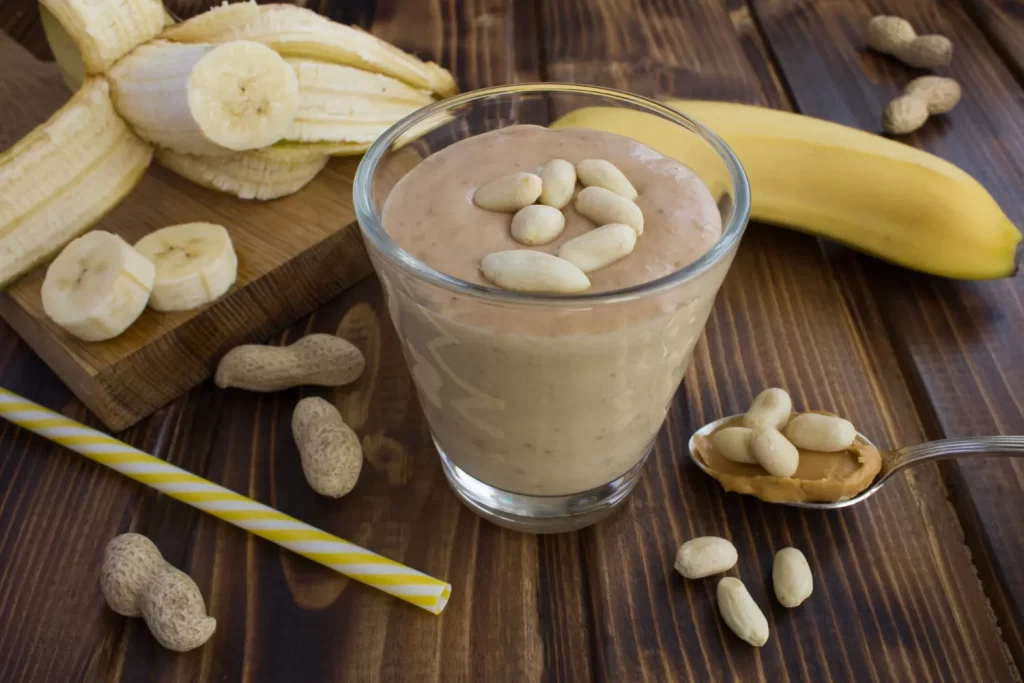
Whole grain options
Elevate your peanut butter experience by pairing Gao Farm’s Peanut Butter with whole grain options. Spread a generous dollop of Peanut Butter onto whole grain toast or blend it into oatmeal for a delightful fusion of textures and tastes.
Fruits and vegetables
Venture into culinary creativity as peanut butter dances alongside various fresh fruits and vegetables. Dip apple slices into the velvety spread of Gao Farm’s Healthy Chocolate Peanut Butter, or let Cucumber sticks become vessels for a delicious peanut butter crunch.
Smoothie ideas
Enter the world of smoothies, where peanut butter becomes the star ingredient in various delightful concoctions. Blend Gao Farm’s best quality peanut butter or natural chocolate peanut butter with bananas, spinach, and a splash of almond milk for a creamy and nutrient rich smoothie. The result is a velvety mixture that tantalises the taste buds while nourishing your body.
Recipes And Meal Ideas Featuring Peanut Butter
Peanut Butter Overnight Oats:
Combine rolled oats, milk (or a milk alternative), peanut butter, chia seeds, and a touch of maple syrup. Let it sit in the fridge overnight, and enjoy a convenient and delicious breakfast in the morning.
Thai Peanut Noodles:
Create a flavorful peanut sauce using peanut butter, soy sauce, lime juice, sesame oil, and a bit of chilli. Toss the sauce with cooked noodles, vegetables, and your choice of protein for a tasty Asian-inspired dish.
Peanut Butter Energy Bites:
Mix together oats, natural chocolate peanut butter, honey, chopped nuts, and dark chocolate chips. Shape into bite-sized balls and refrigerate. These make for a great on-the-go snack.
Peanut Butter Stir-Fry Sauce:
Enhance your stir-fry dishes by incorporating a homemade peanut butter sauce. Combine peanut butter, soy sauce, ginger, garlic, and a bit of water. Use it to coat your favourite stir-fried veggies and protein.
Peanut Butter and Jelly Sandwich with a Twist:
Elevate the classic PB&J by using good quality bread, natural peanut butter, and gourmet fruit preserves. Add sliced fruits like strawberries or bananas for an extra touch.
Peanut Butter Dressing:
Blend peanut butter, olive oil, apple cider vinegar, honey, and a pinch of salt to create a versatile dressing. Drizzle over salads, grain bowls, or roasted vegetables.
Peanut Butter Stuffed Dates:
Fill pitted dates with a dollop of high protein peanut butter spread and top with a sprinkle of sea salt. This simple treat offers a balance of sweet and savoury flavours.
Savouring Peanut Butter Sensibly: A Little Guide to Responsible Enjoyment
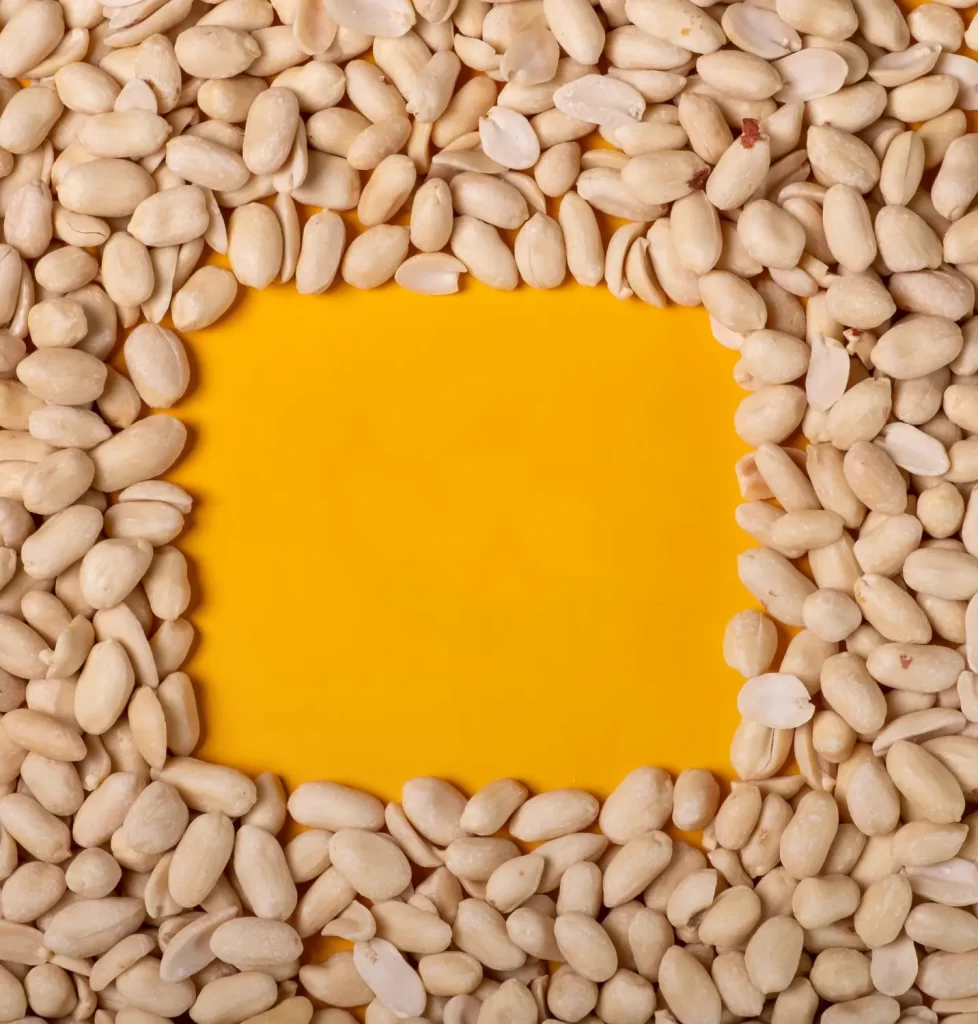
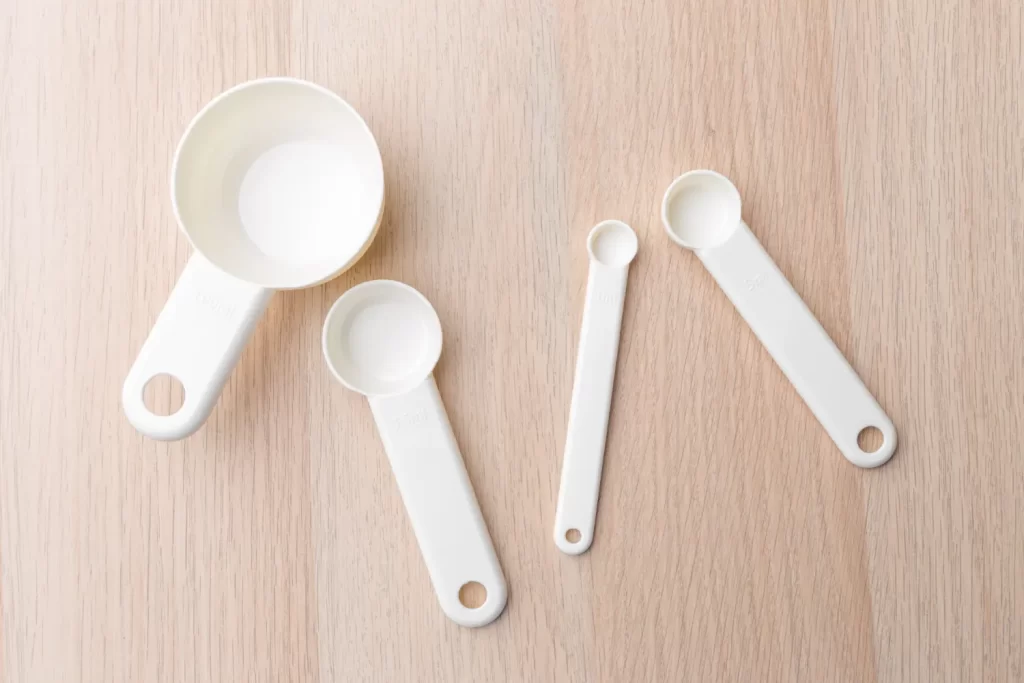
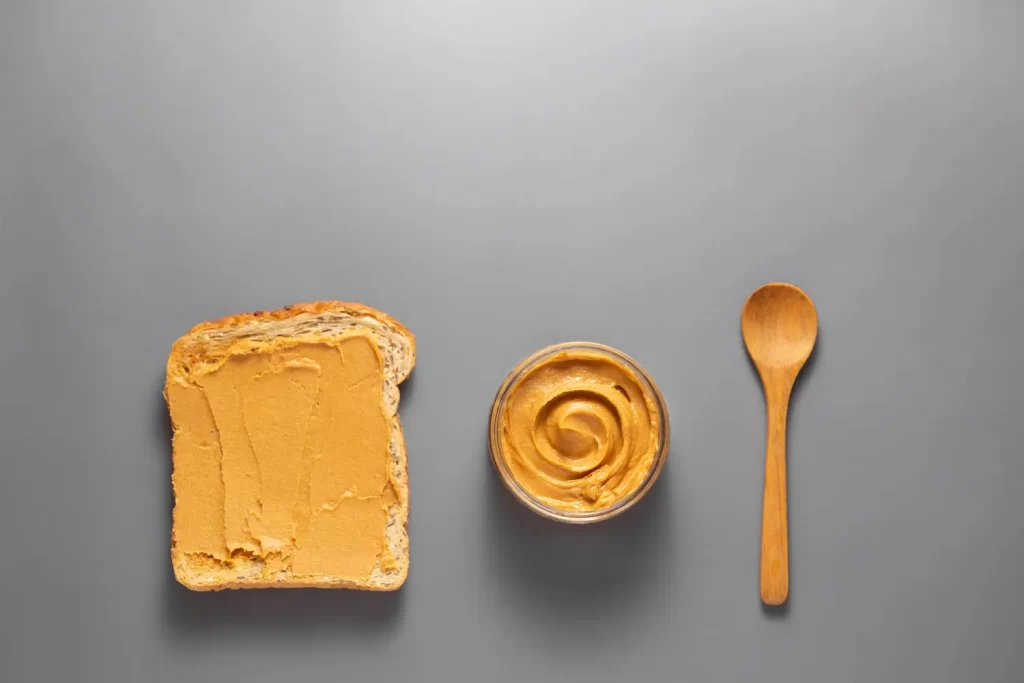
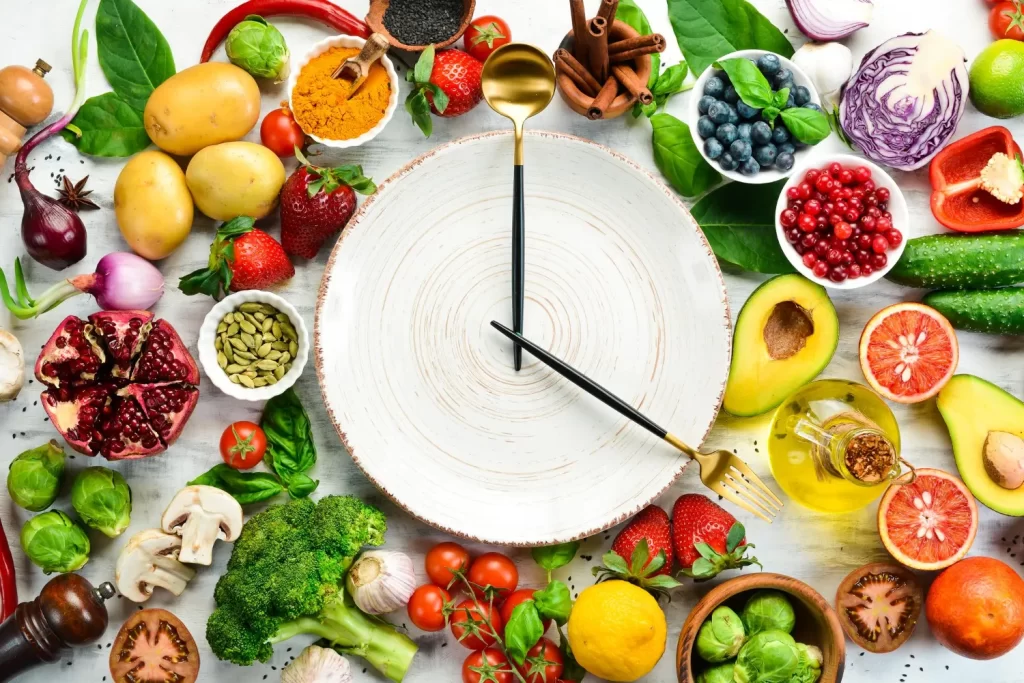
Reading nutrition labels
Embark on your peanut butter for weight gain or management journey with an informed viewpoint by meticulously reading nutrition labels. Acquire knowledge about how many calories, fats, and sugar it contains.
Using measuring tools
Uncover the nutritional nuances, from portion sizes to calorie content, and equip yourself with insights to make mindful choices. Precision becomes your ally as you adopt the practice of using measuring tools.
Avoiding excessive consumption
Tempting as it may be, avoid excessive consumption to maintain a balanced relationship with this nutty indulgence. Moderation ensures you enjoy the flavours while respecting your body’s needs.
Balancing peanut butter with other sources of nutrition
Elevate your peanut butter experience by balancing it with other sources of nutrition. Pair it with whole grain bread for a fulfilling snack, or let it spotlight the creaminess of a banana smoothie. This diversifies your nutrient intake and supplements the nutritional impact.
Conclusion

Before we wrap up our adventure, let’s go back to the heart of our journey. We’ve dug into peanut butter from different angles, from busting myths to uncovering what’s true about its nutrition and impact on weight. One big idea has shone brightly throughout our talk – the goodness of balance and not going overboard. The lesson is clear among all the flavours and nutrients: eating just the right amount and staying mindful of how much we enjoy matters most. With this new knowledge, we’re all about making smart food choices. We’ve got the scoop on food facts and are now picking what’s right for our well-being. The idea that peanut butter puts on weight has been proven wrong, showing that being informed is powerful. In its place, we see a beautiful friendship between peanut butter and health, thanks to science and being thoughtful about what we eat.
As we wave goodbye to this journey, may your path be filled with delicious discoveries and a warm embrace of peanut butter’s healthy perks. In a world of tastes and stories, let’s follow the guide of wisdom, leading us toward feeling good and full of energy.


